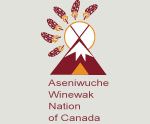Trapping in Bush Land
Quicklinks Lessons
- Trapping in Bush Land
- Grade 7:
- Aboriginal Beliefs and Values
- Grade 8:
- Aboriginal and Métis Influence
- Grade 11:
- Interdependence
Teacher Information:
Bush Land People generally refers to people who live in Boreal Forest zone of northern Alberta, north western Saskatchewan, and south-central parts of the Northwest Territories. These people are the Dene or Anishinabe (Chipewyan), Cree, and Dogrib Aboriginal Peoples.
Hunting and trapping was and in some Aboriginal communities continues to be the primary means of subsistence living and trade. People devoted the majority of their time to hunting and trapping as well as preparing hides for trade. The role of the hunter within these communities was very important to the survival of the group. This does not discount the other essential roles that community members played. Young men and women would be trained in hunting and trapping techniques and protocols from an early age. Sports were an apprenticeship in one sense. In many communities today hunting and trapping still exists but it could be considered recreation, as many communities cannot rely on hunting and trapping to earn a living. However, this does not mean that animals are being used wastefully; the concept of recreation in this sense refers to the traditional practice of hunting and trapping as being an enjoyable activity for many.
Objectives:
- Develop understanding of what a traditional hunting and trapping lifestyle was like
- Appreciate the importance of hunting and trapping to Aboriginal communities
- Discover new terminology related to hunting and trapping
Use the notes in Teacher Background;" and distribute the following Bush Area map to students so they may have a visual understanding of the area. You should also direct students to the photo gallery and student text, located in the student zone to view pictures depicting life on the trap line.
"Bush" Area

Click in the black outlined area to view a detailed map of lakes and rivers. The black rectangle shows the "bush" area of the people in this story - northeastern Alberta, northwestern Saskatchewan and the southern part of today's Northwest Territories.
Based on the above information distributed to students coupled with the information located in the student zone (Glossary, Tid Bits, Student Text Resources) have them answer the following questions about Life on the Trap Line.
- Who are the bush people?
- Where are the traditional lands of the bush people?
- What is a bush persons' home residence?
- Describe the bush people's philosophy regarding "the land."
- What does running a trap line involve?
- Where would a hunter or trapper build a home? Why?
- Give two examples of a cloven-hoofed animal.
- What was the use for a "flusher?"
- Why was wolf or dog meat only eaten in emergencies?
- What is one use of bear fat?
- Define the following terms:
(You may need to use the Glossary section of the Student Zone).
- Trap line
- Dene or Anishinabe (Chipewyan)
- Sets
- Subsistence
- Sinew
- Tanning
- Rawhide
- Line Cabin






